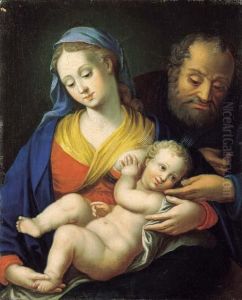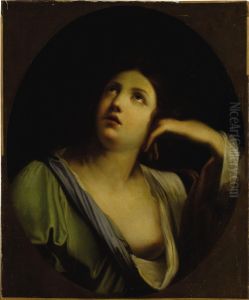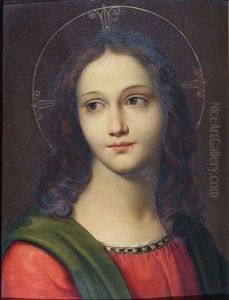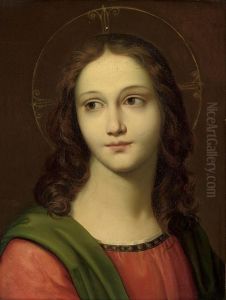Filippo Agricola Paintings
Filippo Agricola, born in Rome in 1799, was an Italian painter renowned for his portraits and historical compositions. His artistic journey began under the guidance of his father, who was also a painter, before Agricola enrolled at the Accademia di San Luca. There, he was mentored by some of the most prominent artists of his time, including Vincenzo Camuccini, a key figure in Italian Neoclassicism. Agricola's early works are deeply influenced by the Neoclassical style, evident in his meticulous attention to form and detail, as well as his choice of subjects that often harked back to classical antiquity.
Throughout his career, Agricola developed a reputation for his masterful portraits, which were highly sought after by the Roman elite. His ability to capture the essence and individuality of his subjects was matched by his skillful use of light and shadow, creating lifelike and expressive works. Beyond portraiture, Agricola also engaged with historical and religious themes, imbuing his compositions with emotional depth and narrative complexity.
In the mid-19th century, Agricola became involved with the Accademia di San Luca, first as a member and later serving in various administrative roles, including President. His involvement with the Accademia underscored his commitment to the arts and his influence on the next generation of Italian artists. Agricola's contributions to Italian art were recognized in his time, and he was awarded numerous honors, including a knighthood.
Agricola's legacy is preserved in his paintings, which can be found in churches, public buildings, and private collections throughout Italy. His work remains a testament to the enduring appeal of Neoclassicism and the transition towards Romanticism in Italian art. Filippo Agricola passed away in Rome in 1857, leaving behind a body of work that continues to be celebrated for its beauty, technical skill, and emotional resonance.



